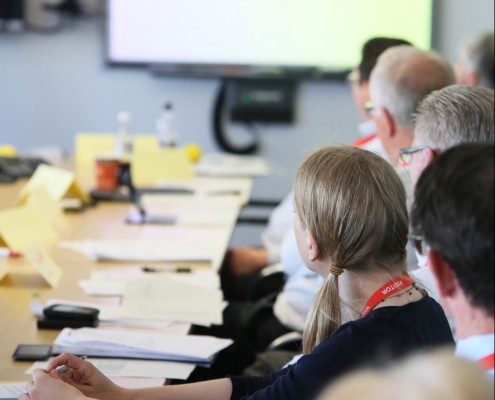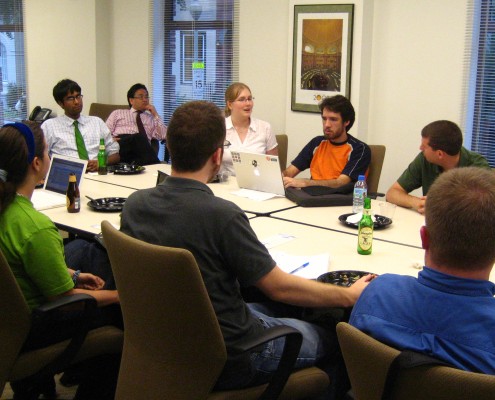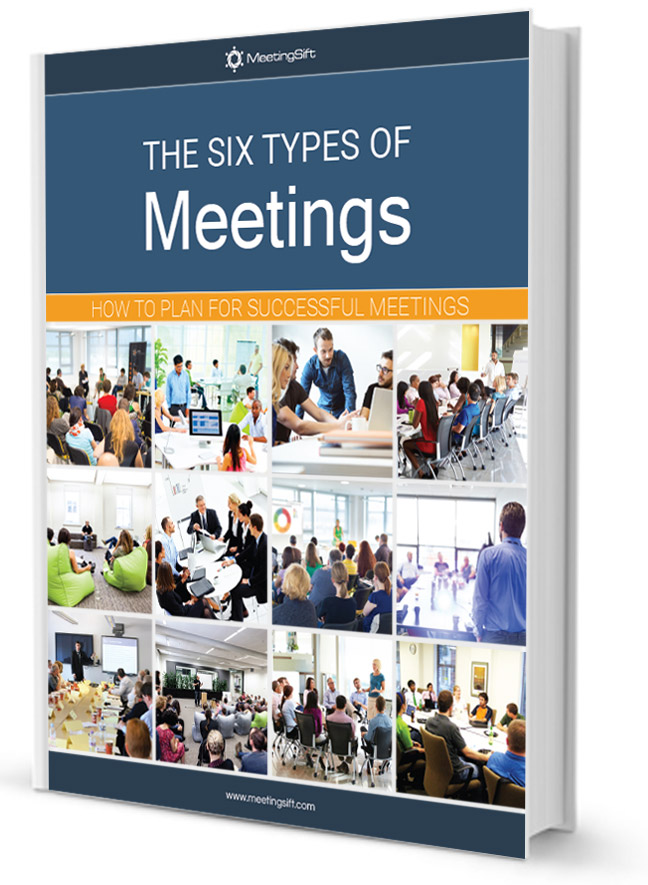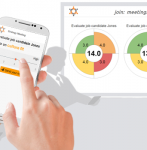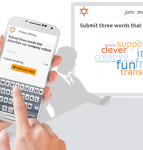 http://meetingsift.com/wp-content/uploads/2015/06/hands-on-top-of-each-other-in-a-center.jpg
618
927
Viil Lid
http://meetingsift.com/wp-content/uploads/2015/10/MeetingSift_LOGO_horiz-white-470x119-470x119.png
Viil Lid2017-07-17 14:03:172017-07-28 15:24:02How to Run Team Building Meetings
http://meetingsift.com/wp-content/uploads/2015/06/hands-on-top-of-each-other-in-a-center.jpg
618
927
Viil Lid
http://meetingsift.com/wp-content/uploads/2015/10/MeetingSift_LOGO_horiz-white-470x119-470x119.png
Viil Lid2017-07-17 14:03:172017-07-28 15:24:02How to Run Team Building MeetingsThe answers to the initial questions — “Why have this meeting?” — will guide you in understanding the goals of the meeting and successful creation of the agenda.
Imagine you are leading a meeting and have responsibility for the meeting’s success. The list of participants may include colleagues, your staff, staff from other departments, key visitors from other businesses, and management throughout the hierarchies. Your level of preparedness will directly translate to the degree of success of the meeting. You may be nervous, leading the meeting, but with a detailed road map — the agenda — you have the confidence that you won’t get lost. In fact, as meeting leader you will have a separate, expanded agenda with details and suggestions to help make sure your meeting is a winner.
There are a number of common meeting types, or themes, which will help shape the questions and details the agenda needs to address. Ultimately there must be value in having the meeting for everyone involved. Some times you will find that email exchanges will accomplish the desired results without having to have a meeting at all. Yet, the business community by and large agrees that meetings — when well prepared and executed — are by far the most powerful tool to accomplish cohesive and focused progress in organizations.
What Should a Meeting Agenda Contain?
Agendas vary in their content, but there is one overarching truth in the business community:
Without a well prepared agenda, any meeting of significance will commonly fail to attain the effectiveness and efficiency expected by the meeting leader, the participants, and the management and customers who depend on the meeting’s success.
What do you need to accomplish?
Knowing what needs to be done, what to cover in the meeting, drives the details in the agenda. Be thorough. This may seem obvious, but it is prudent to be thoughtful, especially the more complex the meeting’s purpose. As mentioned previously, knowing the type, or themes that the meeting falls within is helpful. Are you or your group making a decision? Perhaps getting status reports? Brainstorming a new product or service, or planning how to roll them out? It may be an announcement that needs to be done face-to-face.
Know your audience
The meeting’s content must be relevant to the interests of all participants, and within their framework of understanding. If any agenda items are too technical in nature for certain participants, you will lose their attention unless explanations are offered where needed. Conversely, if too much content is overly simplistic, some attendees may resort to surreptitious texting or checking email.
Save time with meeting agenda templates
Thinking back to the types, or themes, of various meetings, it is beneficial to maintain a meeting agenda template for each. It will save you time, and improve your effectiveness in creating agendas, if you have a high quality starter agenda on hand.
Without question, the meeting’s purpose must be clearly stated upfront in the meeting agenda, and stand as the cornerstone for the agenda’s content. It’s somewhat like writing a book, where every chapter, every scene must lend toward carrying forward the story (or the meeting in this case) to its desired endpoint. The agenda shared with meeting participants will contain the logistics and at least the headings of the various agenda items in the meeting. The meeting leader’s agenda will be a greatly expanded version of the agenda sent to the attendees. It will contain the nitty-gritty details to be discussed within each agenda item, including who is responsible for each, the process, and time allotments.
Elicit agenda ideas from key people
A potential downfall of anyone responsible for an agenda is the autocratic approach — the thinking that no one else’s input is necessary. Let’s say you are doing the initial planning for a large project. If you — as meeting leader — plan the agenda solely on your own, your ego may enjoy a momentary inflation, but the complexity of the planning required suggests that your meeting will fall well short of success. In fact, it might hurt your reputation as a leader along with your leadership role. However, if you ask for input from key staff and management, along with an inquiry as to which other departments should be involved, then the likelihood of success increases dramatically.
Involving key participants to help identify potential agenda items for the meeting serve a three-fold purpose:
- To help ensure you don’t overlook key objectives.
- Having realistic metrics regarding the depth and length of each agenda item help keep the timing of the meeting on track.
- You will have significantly increased buy-in to the meeting by those attendees who feel they had a hand in designing the meeting.
While planning inquiries may most often be sent to attendees, don’t overlook requesting viewpoints from knowledgeable people who are not attending, including the “owner” of the meeting (if not you). As much as deemed appropriate, elicit with the following in mind:
You are requesting thoughtful input regarding which topics should be included in the meeting, and how much time a particular topic may need allotted.
Sending out an advanced notice, requesting input, can vary anywhere from several days (at the very minimum, and only for relatively simple meetings) to weeks in advance of the meeting, depending on the intricacies and challenges presented by the meeting and the availability of the attendees questioned. For example, a key manager may be out of town. The mantra is: don’t want until the last minute.
Your initial request should include at least a well-thought-out draft agenda, not a blank slate (attendees need to trust in your knowledge and leadership).
Send the request only to those attendees who can contribute thoughtful ideas. Remember that every communication received takes time. In addition, some attendees—such as certain guests, possibly clients—should likely not be included. Prudence will dictate.
How detailed should the agenda be?
If the agenda you send out for preliminary feedback, and ultimately to the group of attendees, is too broad, lacking detail, the attendees may not drill down deep enough into the subject matter, and, therefore, may likely not be adequately prepared for the meeting. For example, if you have only two agenda items — (1) Discuss the goal of the project, and (2) How do we accomplish this? — with no additional details, then the myriad questions arising from these two items during the meeting will probably not have been given sufficient thought in advance of the meeting. This will not only slow the forward progress of the meeting, thereby disrupting the timing allotted, but some of the discussions may need to be temporarily tabled pending additional research.
A more expanded agenda serves to guide attendees toward being more fully prepared for the discussions, which further promotes intelligent discussion and throughput. Then, likelihood of overlooking or understating an important agenda item is now greatly diminished.
Setting priorities for agenda items
The MIT HR Department suggests that if you are assigning a priority to each agenda item (during the agenda planning stage; not for publication on the final distributed agenda), ensure only the use of high and medium designations. Items tagged as low priority virtually never make it to the agenda. Priorities help determine which items must be included, given available time, and whether the meeting duration needs to be lengthened. Any leftover items can be moved to a subsequent meeting or attended to outside of the meeting environment.
Diversify the pace and tasks to keep it fresh
In order to keep your meeting participants engaged mix up the types of items in your agenda.
Let’s say you have nine agenda items, three of which have PowerPoint presentations. Unless it is vital to have all three of these juxtaposed in sequence, it is best to separate one or two of them by putting non-Power Point agenda items in between.
Finalizing the agenda
In order to safely conclude the agenda, share the meeting leader’s detailed agenda with those key people who helped formulate it (again, including the meeting’s owner if s/he is not the meeting leader), checking in as to whether the order of the agenda items and the flow still make sense.
Don’t forget to practice running through the agenda items in advance of the meeting. This is a worthwhile step regardless of how well you believe you know the agenda. A single practice run may be enough, allowing a few seconds in between items to simulate meeting flow, but if you stumble at all it is wise to add at least one or more practice runs until you feel relatively comfortable. Your ease in administering the meeting leader role will carry you through any anomalies in the meeting. Practice until it feels second nature.
Other factors to keep in mind
Keep in mind that successful execution of your agenda relies on other factors not to be overlooked or minimized — a comfortable and inviting meeting room, and audio-visual tested and ready to go, e.g.. One more key item: As meeting leader, bring a sense of democracy and an inviting style with you. This will encourage participation, which, after all, is an integral part of what meetings are all about.
Easy planning with agenda templates
MeetingSift offers best practices Agenda Templates for you to use when planning meetings. You can also make your own agenda templates and save in MeetingSift.


